During my teenage years I found myself living on a 50-acre farm complete with a creek running through it, fallow fields, and woodlands abutted against vast National Forest land that made the wilderness seem endless. It was the perfect playground for a young lad obsessed with animals and nature. My favorite place to visit amidst all that was the local beaver pond, and I spent many evenings just quietly sitting along the bank of the pond, VHS camcorder in hand, observing wildlife. The biodiversity there was without equal. There were beavers, of course, but that wasn’t all. Herons stalked the shoreline, woodpeckers foraged in the dead trees flooded by the beaver’s dam, and waterfowl abounded. Coyotes were there, although more often heard than seen, deer were always present, and it’s the place where I saw my first bobcat. Don’t get me started on the variety of amphibians, reptiles, and fishes. Long story long, that beaver pond was a wildlife paradise, home to things I had never seen elsewhere, and it was created entirely by a humble little family of rodents.
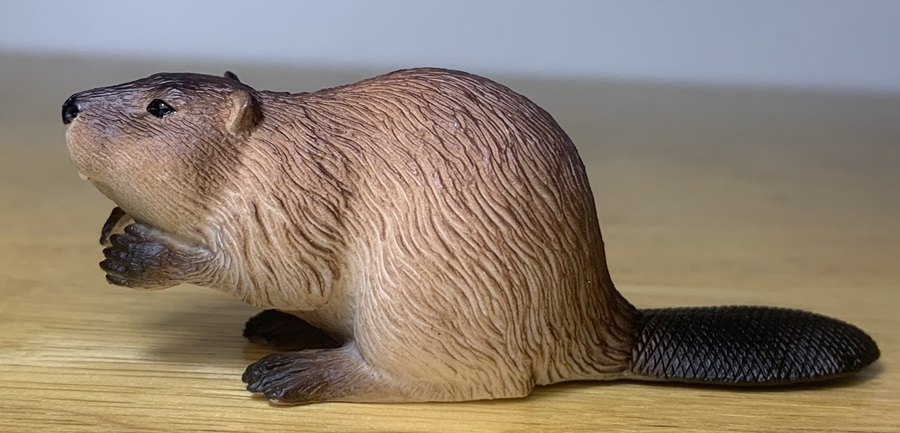
Picking a figure of this habitat engineer that holds a special place in my heart was no easy task. Not because there’s an abundance of quality figures, however. Most of what’s available just isn’t to my liking. Safari’s is cuter than it is realistic. Papo’s looks like a hand puppet. And CollectA’s and Schleich’s are awkward looking in their postures. The one beaver that stood out to me was, surprisingly enough, Mojö Fun’s.
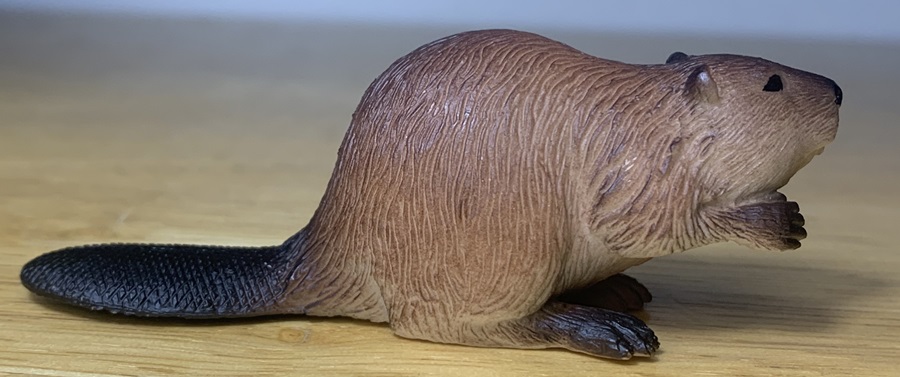
Incidentally, Happy Hen Toys ranked that very same beaver dead last in their beaver buyers guide. But I don’t think the nice folks over at Happy Hen Toys have spent countless hours just watching beavers at work either. I’m not saying I’m a beaver expert, but I’ve spent enough time around them to know what looks right in a beaver figurine. The Mojö beaver, while simple in execution, looks the most like a real beaver anatomically.
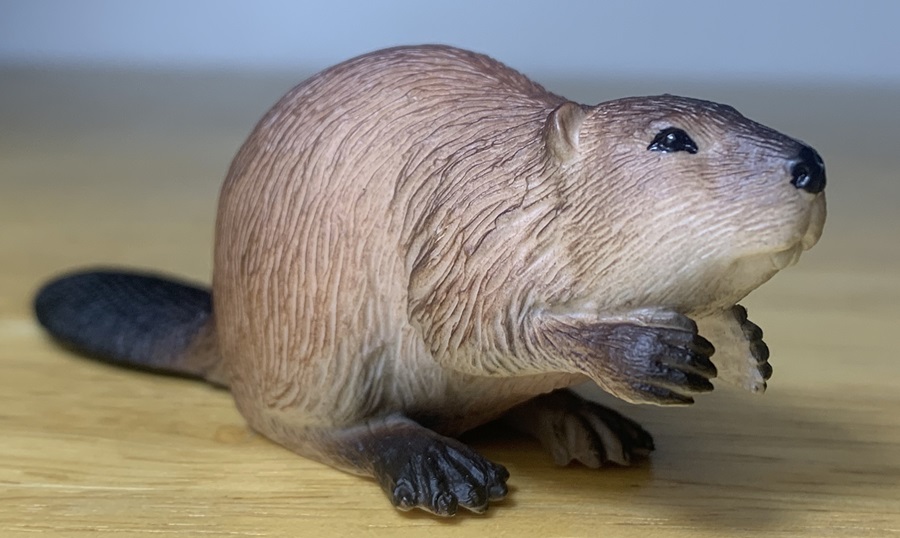
There are two species of beaver, the North American beaver (Castor canadensis) and the Eurasian beaver (C. fiber). I spent far longer than any sane person should trying to identify which species this little toy represents. Ultimately, I decided that I just don’t know. I’m leaning towards Eurasian beaver though, simply because Mojö Fun is a European company. It’s likely that Mojö just set out to make a beaver and didn’t care which species it was, and I suppose they succeeded at it.
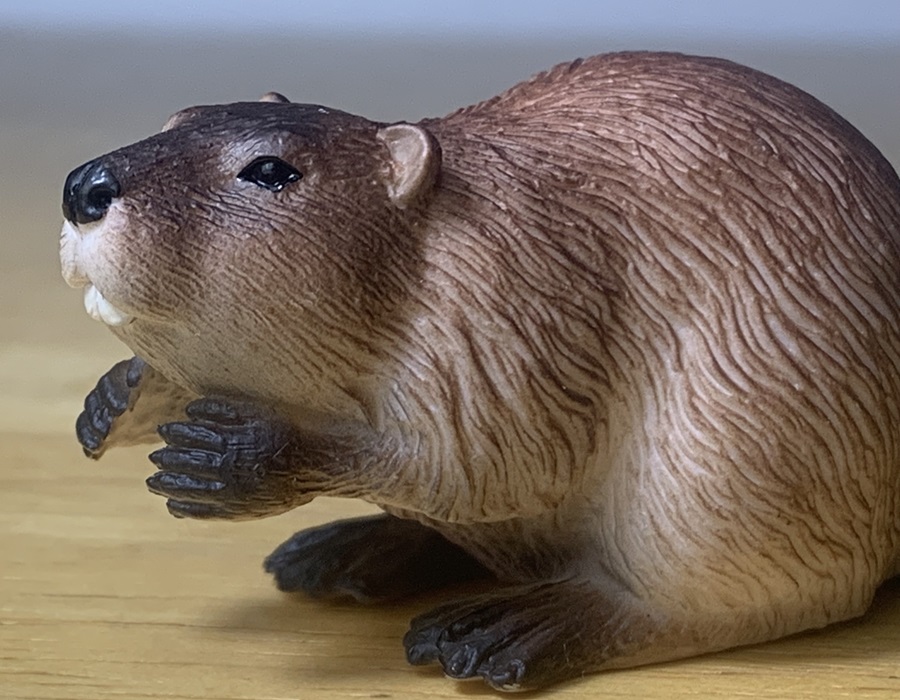
Versus the Eurasian beaver, American beavers have a rounder head, longer fur, and rounder tail, as well as square shaped nasal openings. Eurasian beavers have triangular nasal openings and a longer head, shorter legs and fur, and a less rounded tail. The North American beaver has 40 chromosomes, while the Eurasian beaver has 48. With no definitive markings, you can use Mojö’s beaver for either species.
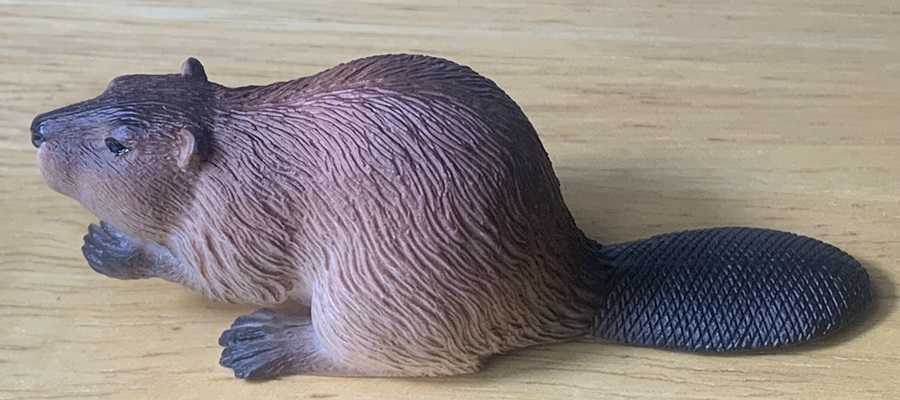
Mojö’s beaver measures 3.25” (8.255 cm) long and stands about 1.5” (3.81 cm) tall. Beavers reach a total length of 3-4’ (0.9–1.2 m) and weigh 35-65 lbs. (16-30 kg). The American beaver is the world’s second largest rodent, outweighed only by the capybara and with a record weight of 110 lbs. (50 kg). The Eurasian beaver ranks fourth, below the capybara, American beaver, and lesser capybara, with a record weight of 88 lbs. (40 kg). On average the Eurasian beaver is larger than the American though. The Mojö beaver comes out to be about 1/9-1/12 in scale.
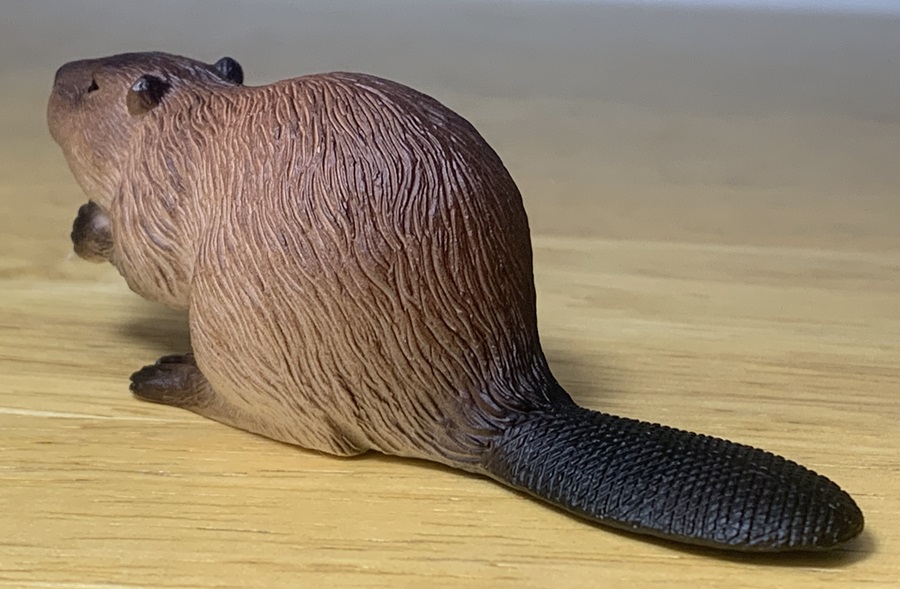
Although it is difficult to identify which beaver species this is, it still nails the look of a beaver. The ears, eyes, and nose are all located on top of the head, which allows the beaver to sense the terrestrial world while still staying largely submerged. The cheeks are rounded, not simply to look cute but because the jaw houses tremendous musculature.
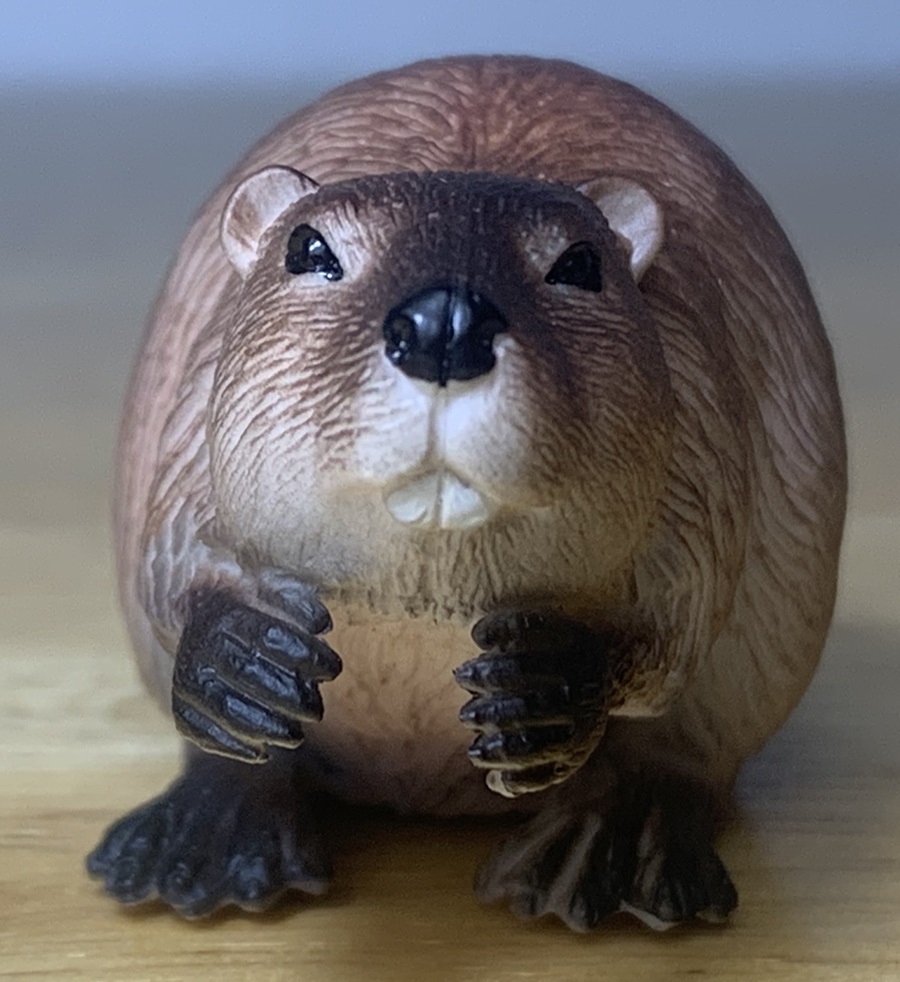
The ever-growing upper incisors are apparent, but they lack the orange coloration of actual beaver teeth. In life, thick enamel rich in iron coats a beaver’s incisors, making them extra durable. No beaver figure gets the tooth color right. The body is rounded and robust with dexterous little five-fingered hands and webbed feet.
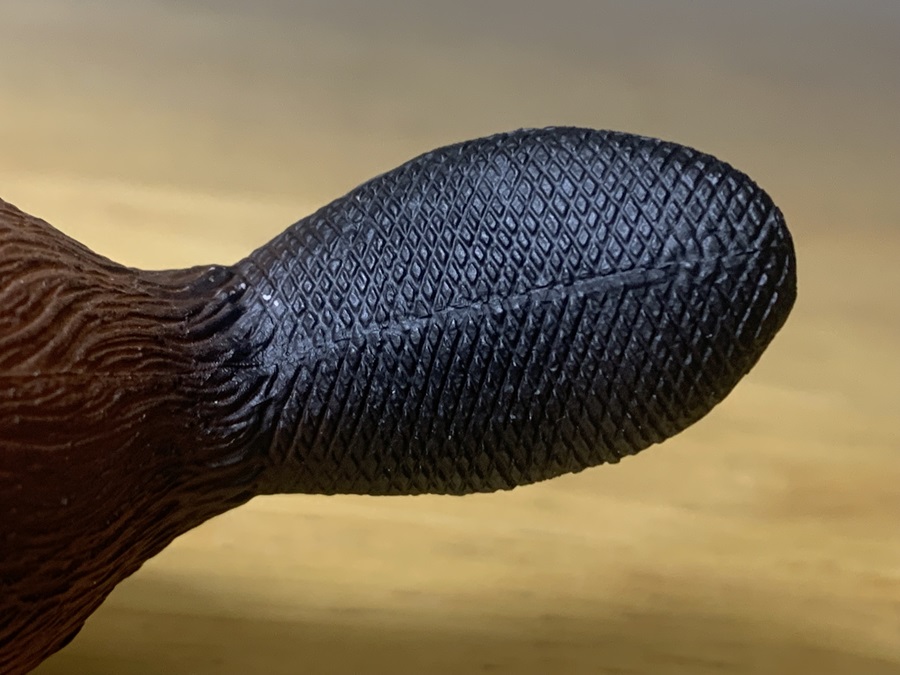
This beaver is presented in a bipedal posture, a posture I’ve seen many times while beavers haul mud or other construction material to their building sites. American beavers are better able to move this way than Eurasian beavers, due to their longer tibias. The figure is also resting on its tail. Beavers use their tail for balance and stability on land and as a rudder while swimming. They make for an effective and starling alarm call when slapped against the water. It also helps shed and retain heat and store fat. What it is not used for is to pat mud or as a sled to carry building material, contrary to popular belief. The scaly detail on Mojo’s beaver tail is excellent, and the fur detail across the body is decent too.
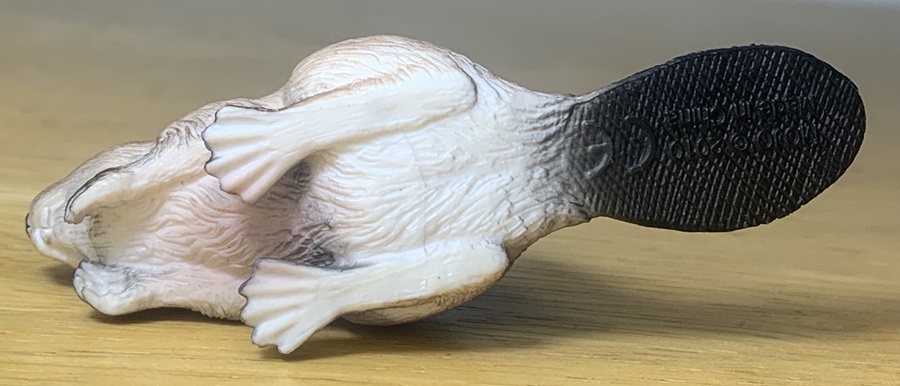
It is possible that this figure is largely ignored due to a rather incomplete looking paintjob. The figure is brown, but it transitions to pink and white on the underside, which is not accurate for a beaver. The color of the fur can vary from light brown to black, but the underside should match the rest of the animal. The nose and eyes are black with a shiny finish. The outside surface of the hands and feet are dark brown while the inside surface is white. The tail is entirely black, or maybe dark brown.
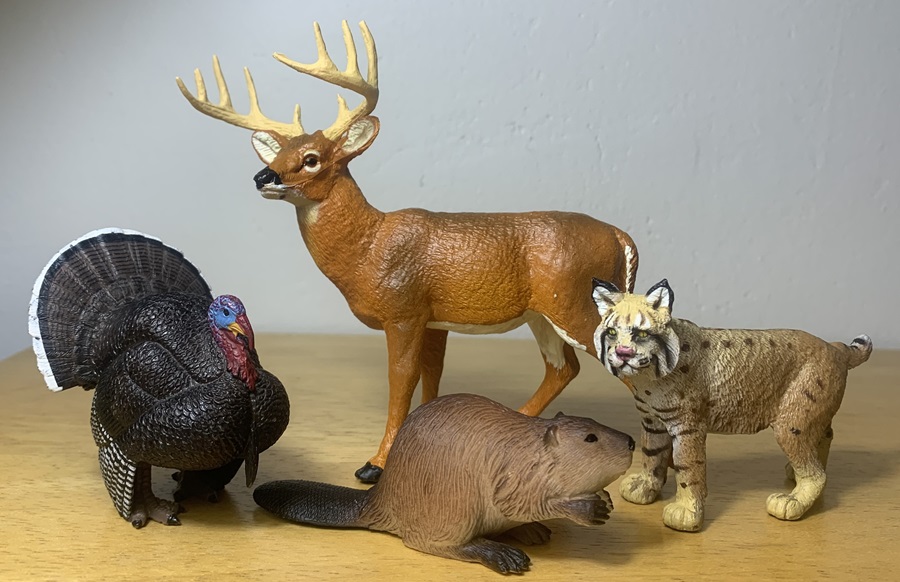
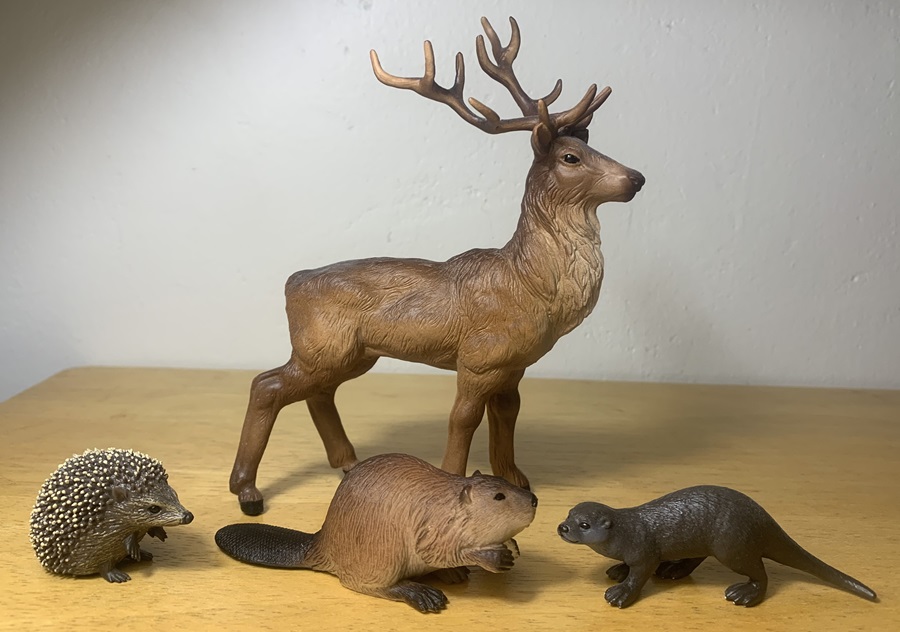
In pose, posture, and anatomy I proclaim that the Mojö beaver is the best figure currently available. A simplistic paint job does hold the figure back somewhat but it’s certainly not enough to warrant a negative review. The Mojö beaver is currently in production and widely available for about $4-7. I will display mine as an American beaver for the time being but if a better beaver comes along, it will likely switch to whatever species that one isn’t.
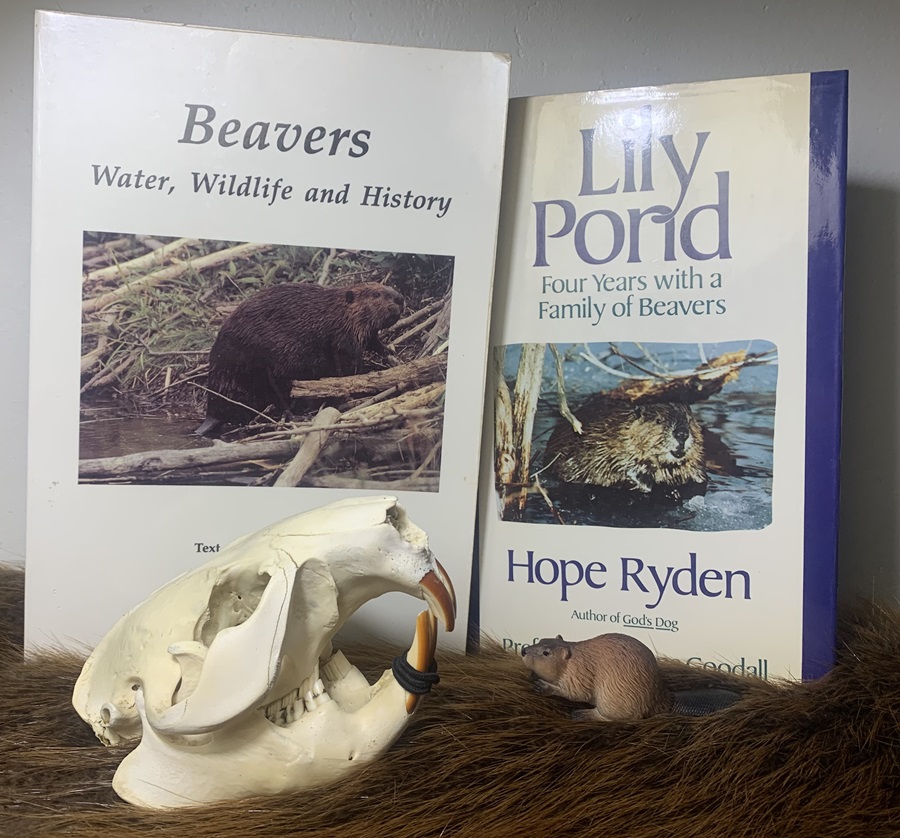
Disclaimer: links to Ebay and Amazon on the AnimalToyBlog are affiliate links, so we make a small commission if you use them. Thanks for supporting us!




Very nice. I also have this beaver as a stand-in for the Eurasian beaver. I have the CollectA as a stand-in for the American, as the American is more likely to stand and walk upright.